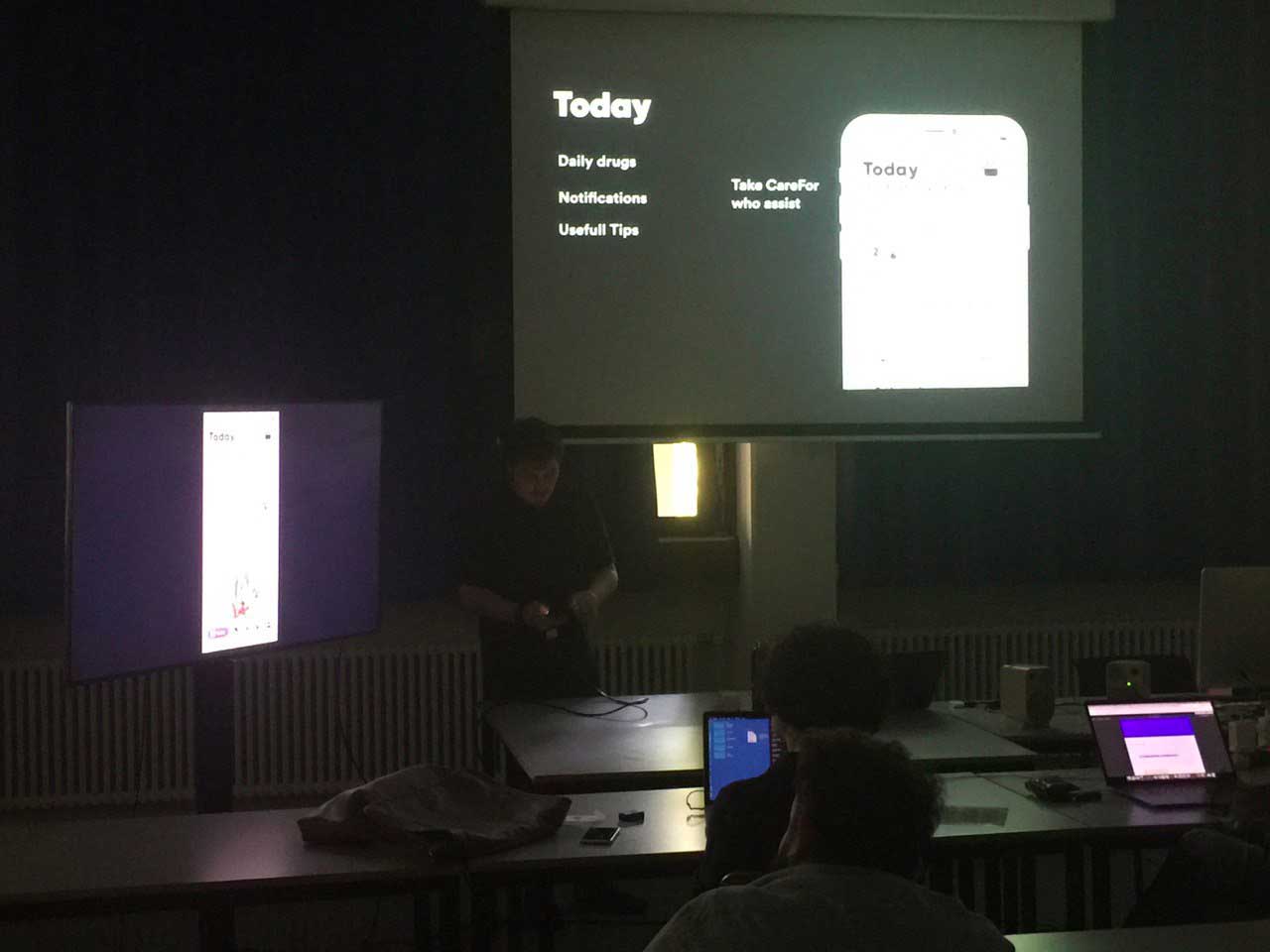Overview
This project is my thesis for the conclusion of the Master in Interaction Design in Switzerland. I had as a supervisor Andrea Renna Senior Interaction Designer who works at FrogDesign Milan, thanks also to him I managed to complete an excellent project that was qualified one of the best.
Abstract
Remedy is the service that helps people with chronic and acute illnesses to improve the daily management of their treatment, with an assistant that offers a point of dialogue and information for the user, combined with a clear and simple management system, that goes beyond the normal leaflets, thus increasing the patient’s confidence and awareness. Unfortunately, in the last 20 years there has been a growing number of people using drugs, this causes problems not only for health services, which have to cope with a constant increase in work, but is mainly a problem for the sick who may feel neglected or little aware of his illness.
For this reason I have chosen to develop Remedy, a service that aims to help mainly people who have a chronic and even acute disease, giving the patient a tool that give the possibility to self-management. The application has as its main engine an Assistant that uses an artificial intelligence to offer us pro-active suggestions. One aspect that I felt to develop in Remedy was prevention thanks to information, in fact we would have daily small suggestions, which will help both our state of life but especially advice regarding one’s own disease.
To help the patient it is thought to develop a simple system to manage their medications, with the simplified insertion of the medication into the application through the use of the camera of the device, allows you to instantly add the correct drug, with all information attached excluding the doctor’s personal posology and expiration date. A function that allows you to use this application not only for people suffering from a chronic disease, there is the possibility to be part of a circle of profiles, in fact you can create a personal circle where you want to share your medications, and keep It traces if one of the circle needs assistance, as can happen to a mother who has to help take medication to her daughter.
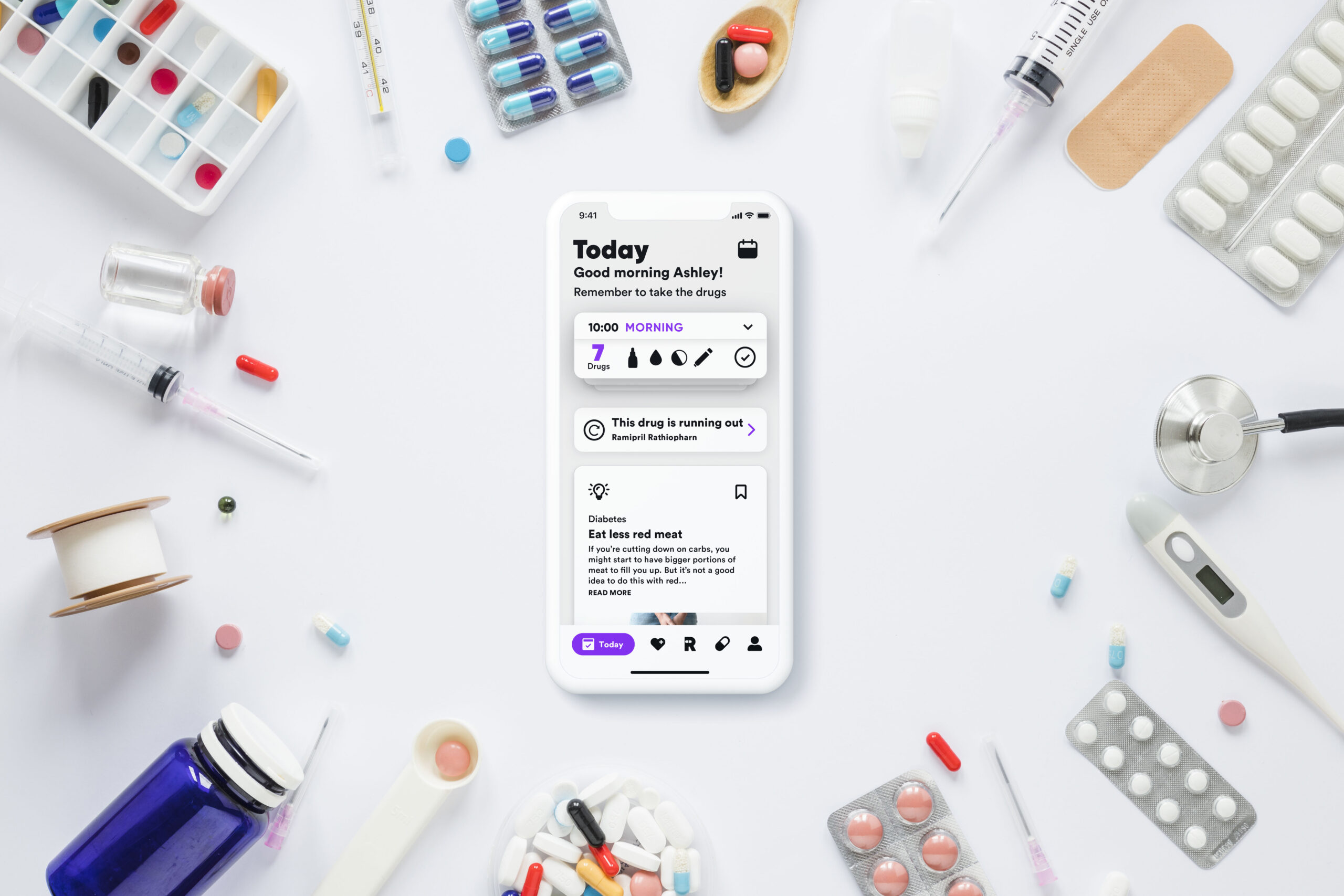
User research
Sentient points of the interview with chronic diseases.
- Develop a system also for the person who need to took care of them.
- Have a system that helps you read the package leaflet in a simple way and warns us if that drug has a substance that cannot be taken.
- Give information about your illness and useful advice about it.
- A reminder for when you need to take or buy drugs, easy to use and very intuitive
- Have a system to mark the symptoms you feel and the medications you take, so that you can remember them better and show them to the doctor.
Sentient points of the interview made on pharmacist and doctors.
- The sick can be classified as Acute or chronic.
- A greater relationship is needed between a patient suffering from a chronic condition and a pharmacist.
- Make the package leaflets more understandable to the average user, who does not have much medical knowledge.
- Create a greater connection between the chronic patient with his medicine, reassure him and make him aware of the benefits, even if not obvious.
- Having a tracker for those who take a drug every day is important and should not be underestimated.
Personas

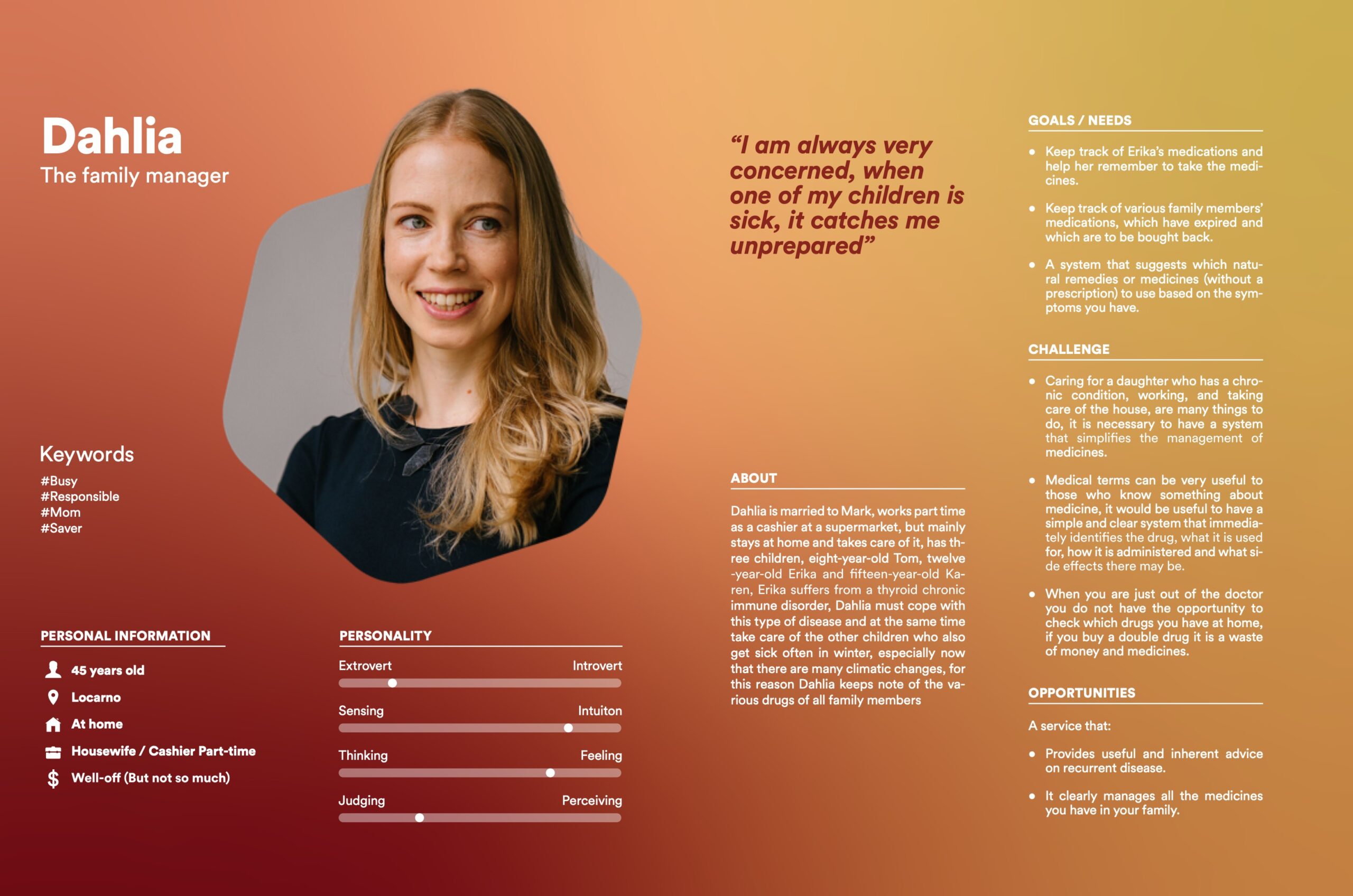
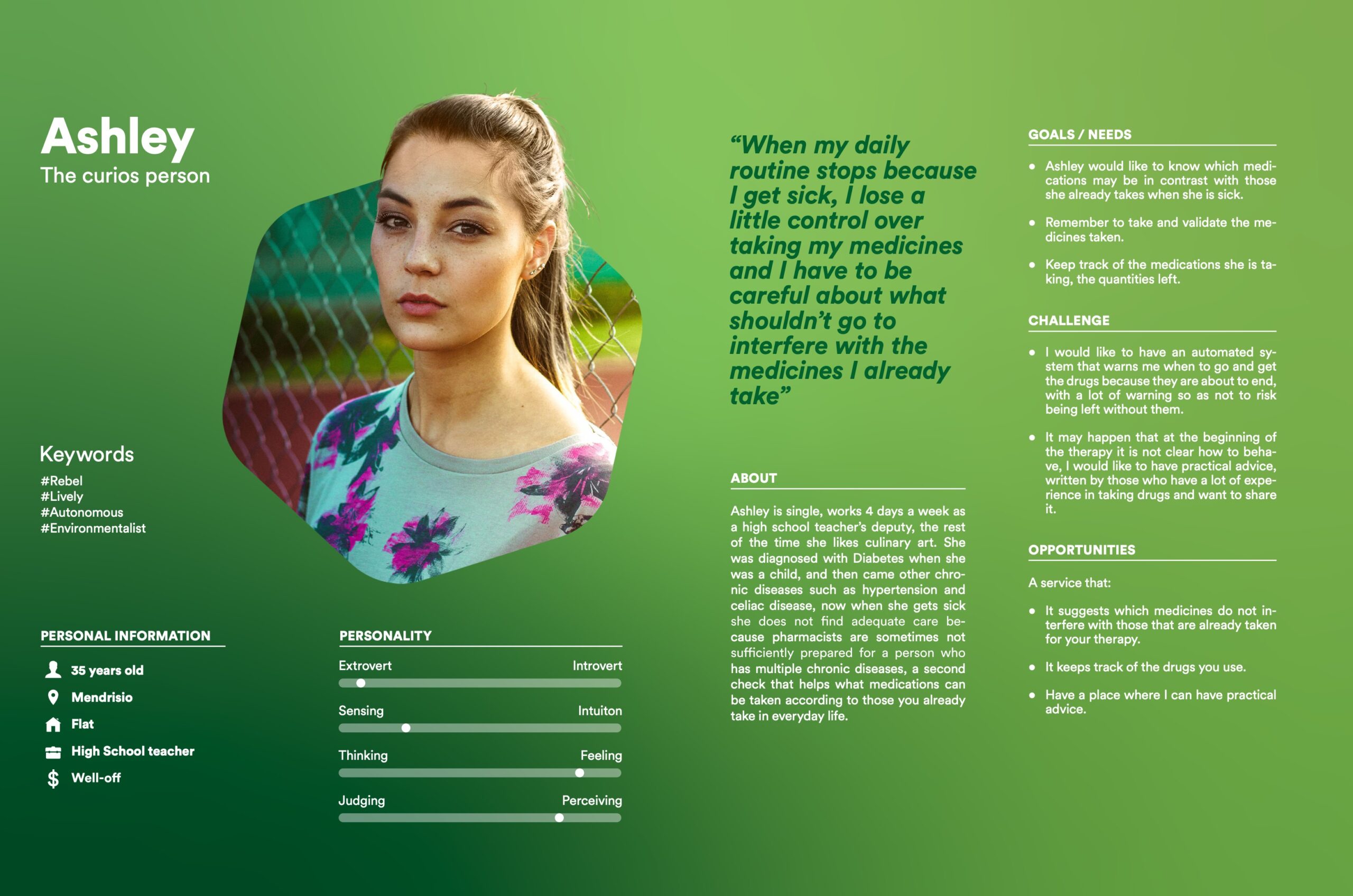
Concept pillars
The Value Proposition
Remedy is the only service that helps people with chronic and acute illnesses to improve the daily management of the treatment, developing an assistant that offers a point of dialogue and information for the user, combined with a clear and simple management system that goes beyond the normal leaflets, thus increasing the patient’s confidence and awareness.
The mission
Develop a system aimed at people who do not have extensive medical skills, so that it gives them greater clarity and security and reduces misunderstanding, (for example when taking a drug) when they face the following cases: Understand how to take a drug, when to take it, the reasons why to take it, and especially how to manage it. Greater connection between the patient, and the medical institutions staff.
The Vision
The increase in the number of chronically ill people or people taking drugs is becoming more and more constant, so we want to make the sick more autonomous and aware, allowing them to keep their medicines and treatments organized in the least complicated way possible, and keep the sick with advice on how to live in health and practical advice related to one’s illness.
Features
Care Management
Pills Management
Cure Assistant
Cure Tracking
Reminders
User Journey
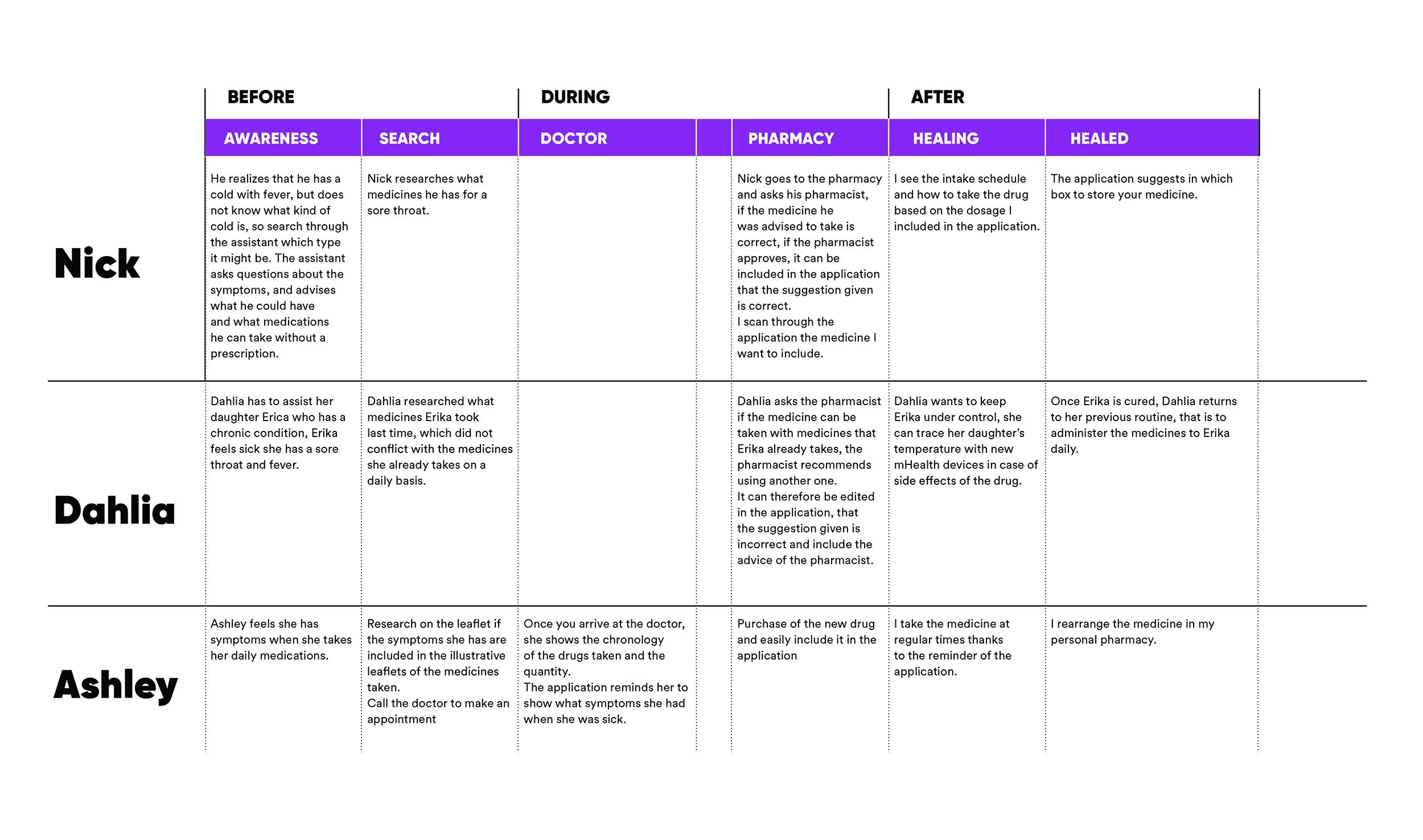
Information Architecture
Sketching session
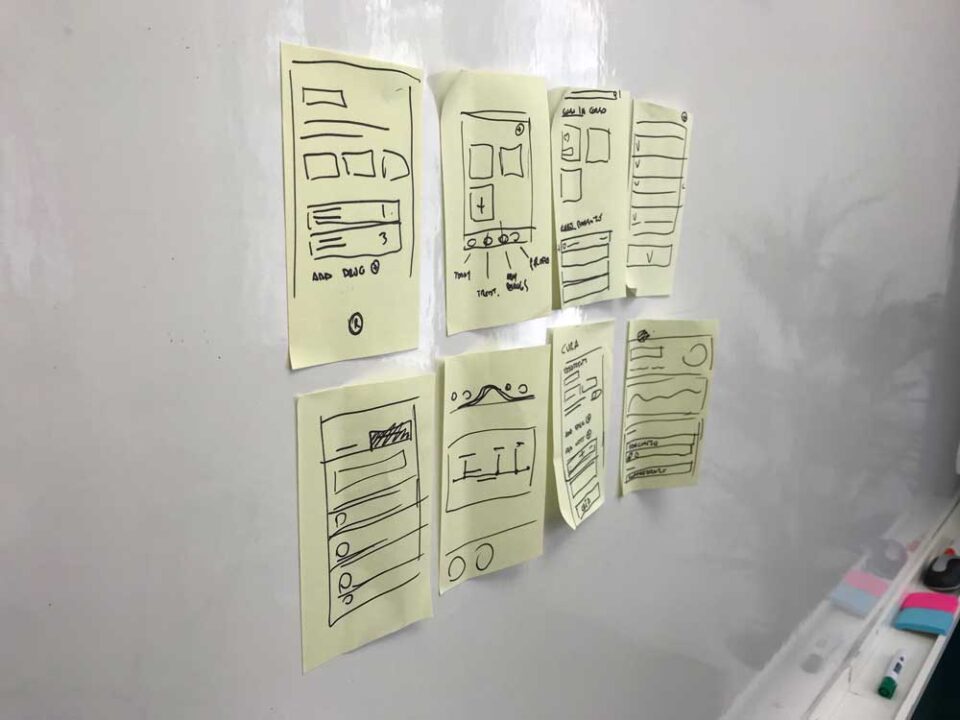
Wireframe
Moodboard
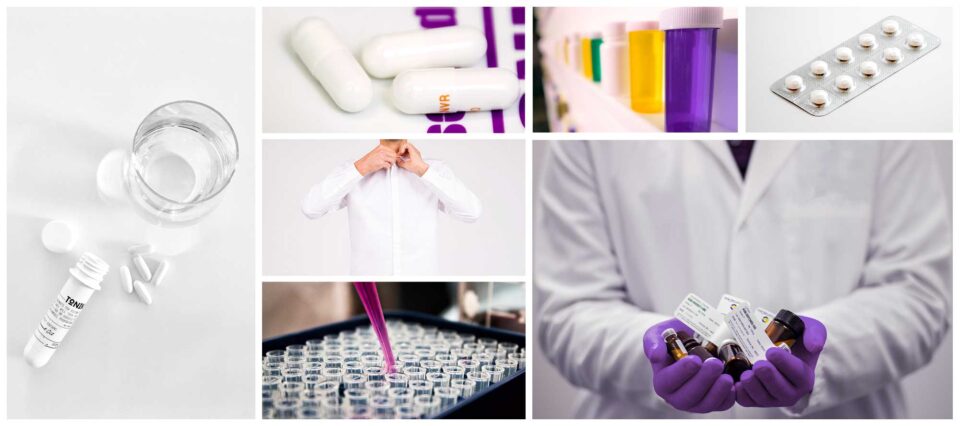
Brand Identity
Logo Concept
Final Logo
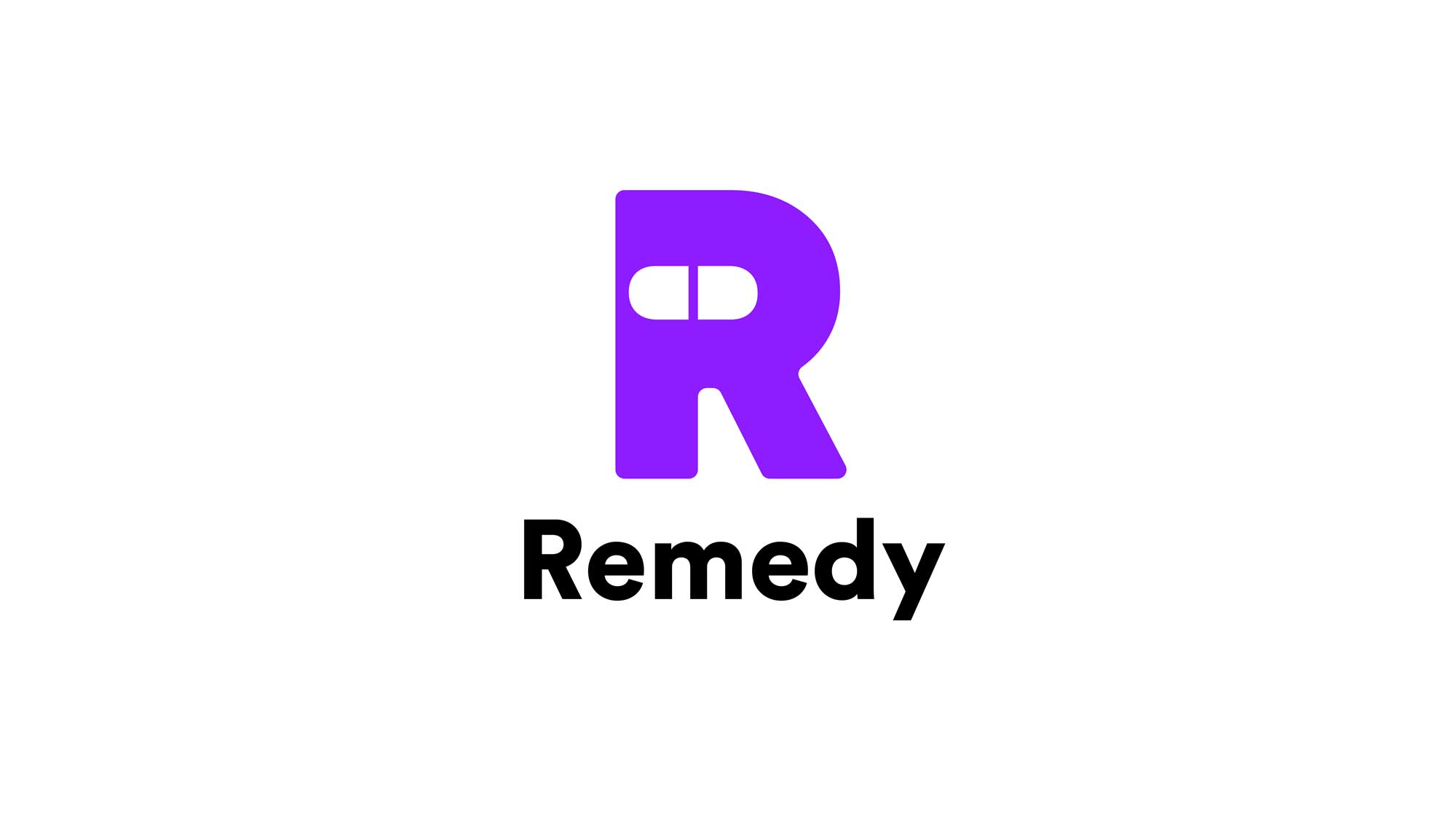
Typography
Colors
UI elements
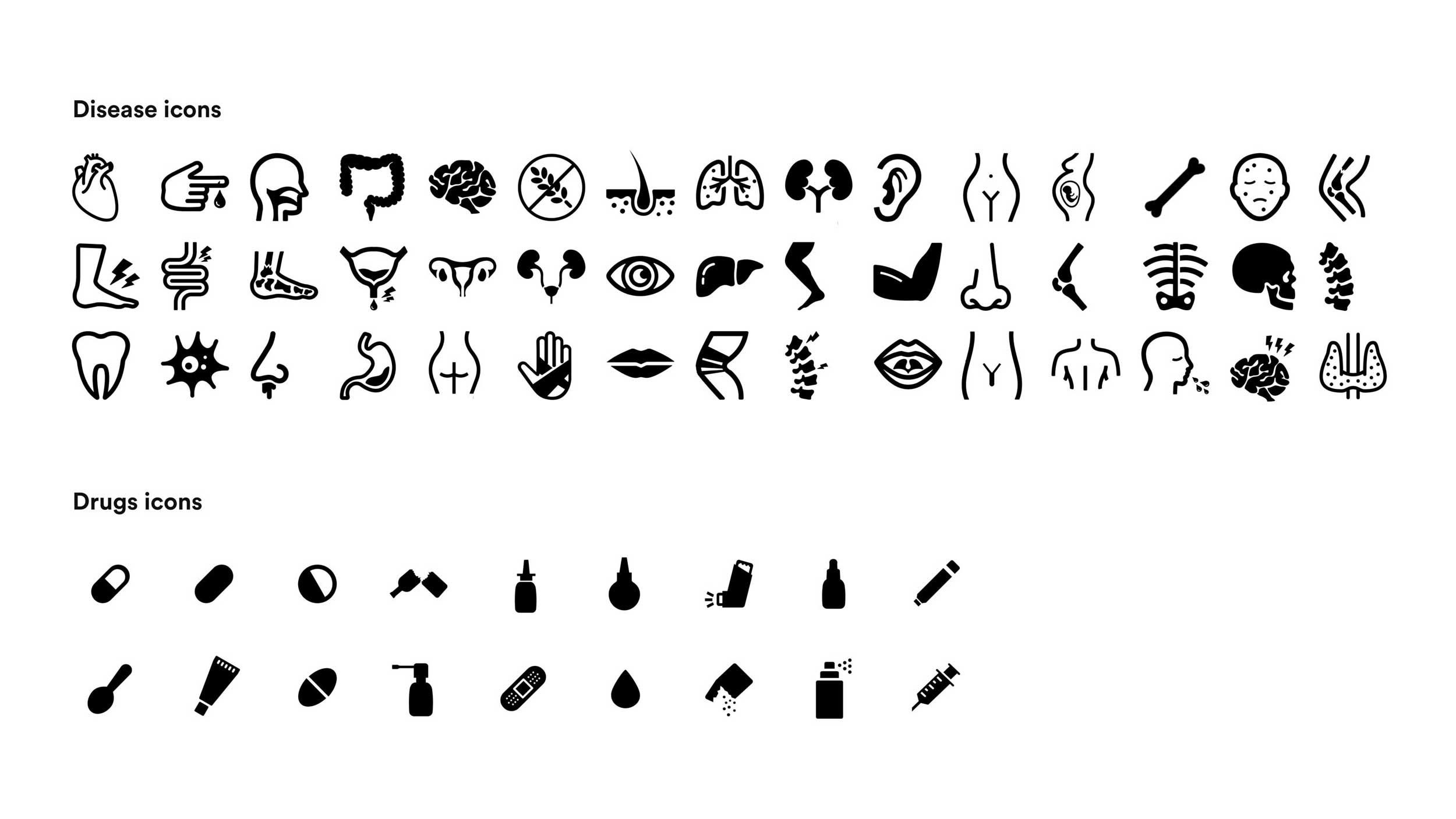
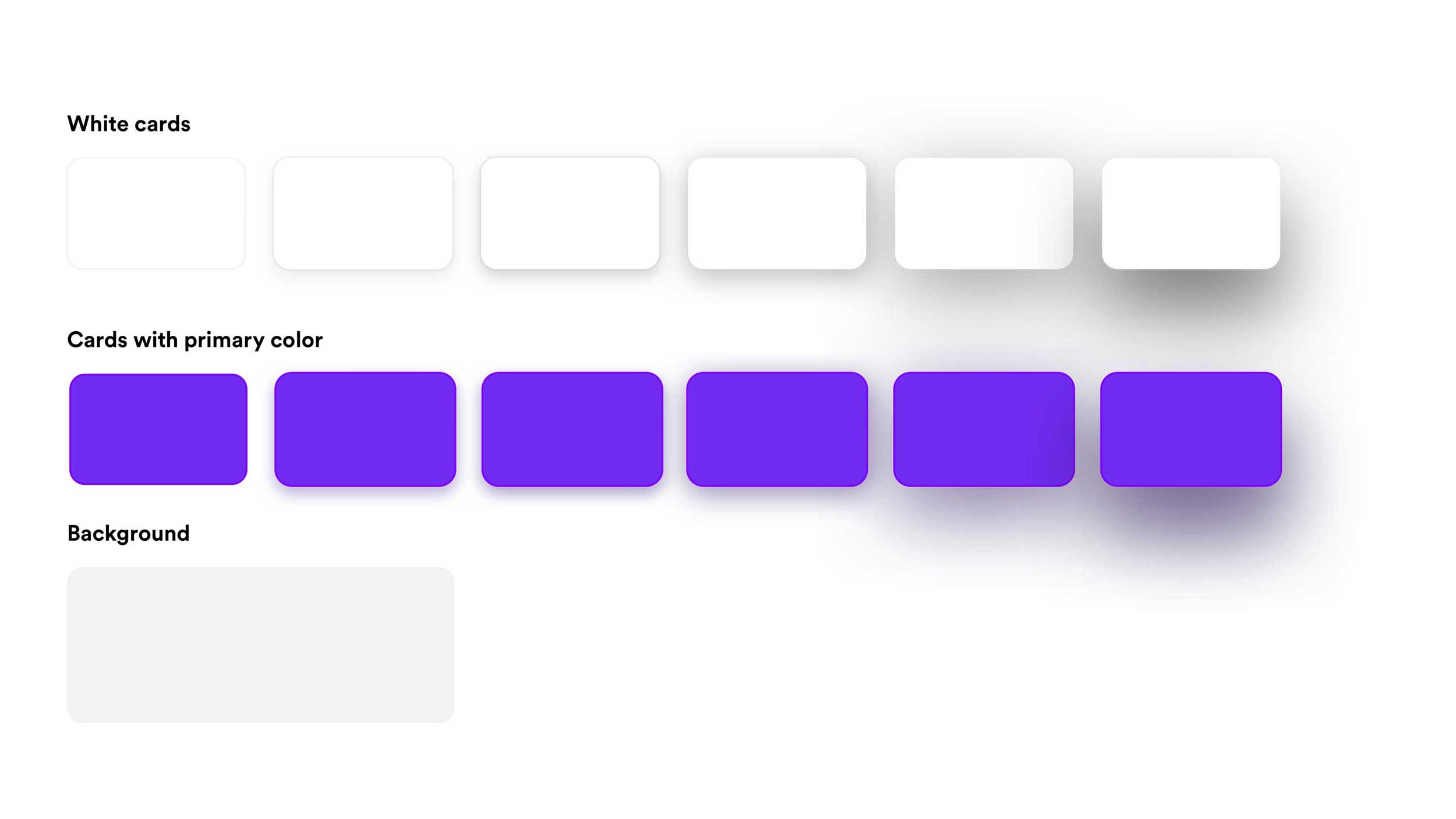

Grids
For the application I choose to use a Grid of 8pt , this allows me to use a variety of screen sizes wider, in fact lately the size of the screens continue to increase, using instead an even number such as the eight, the scalability is better because most screen sizes are divisible by 8, which makes this grid very functional.
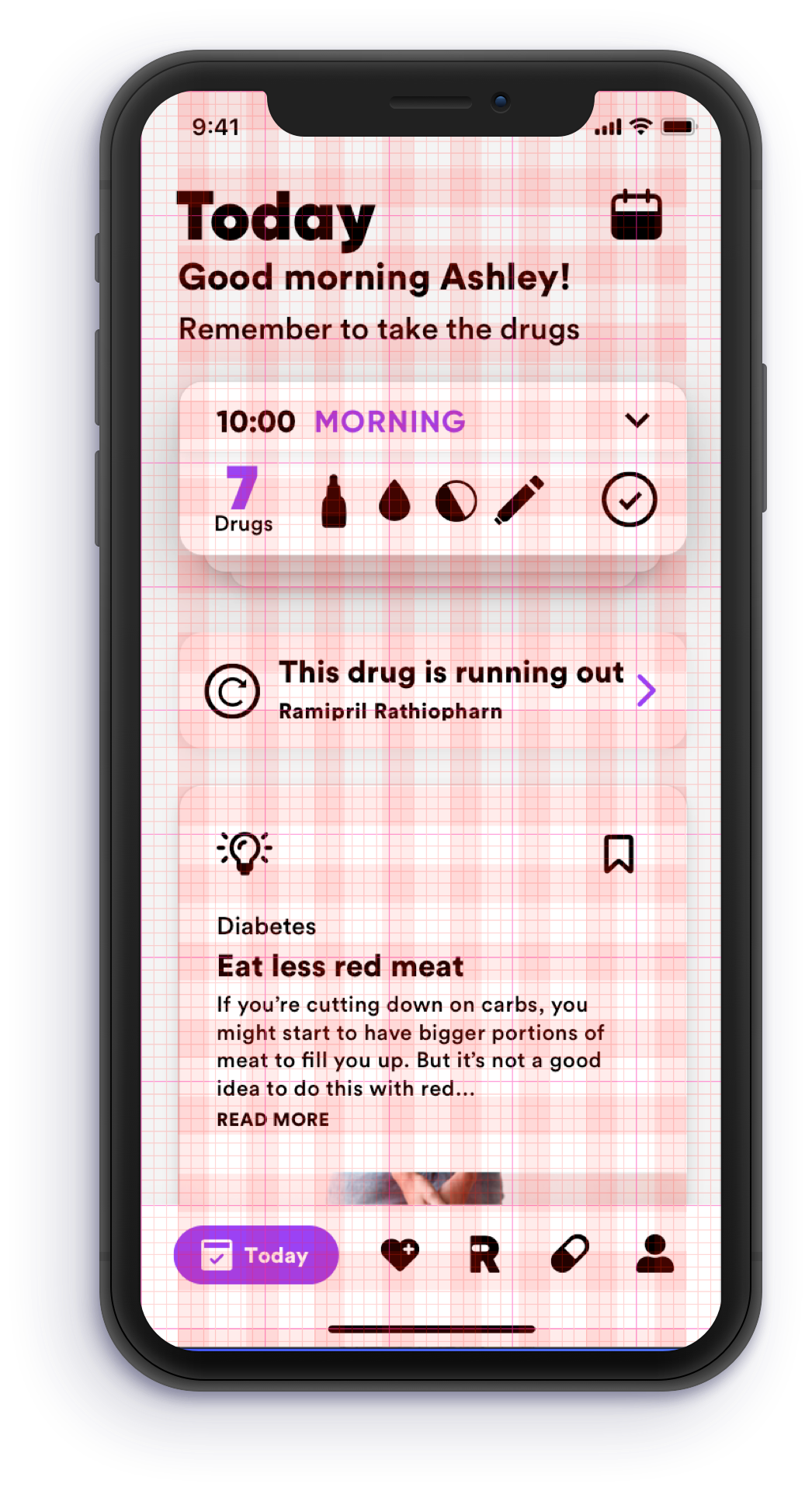
Screens
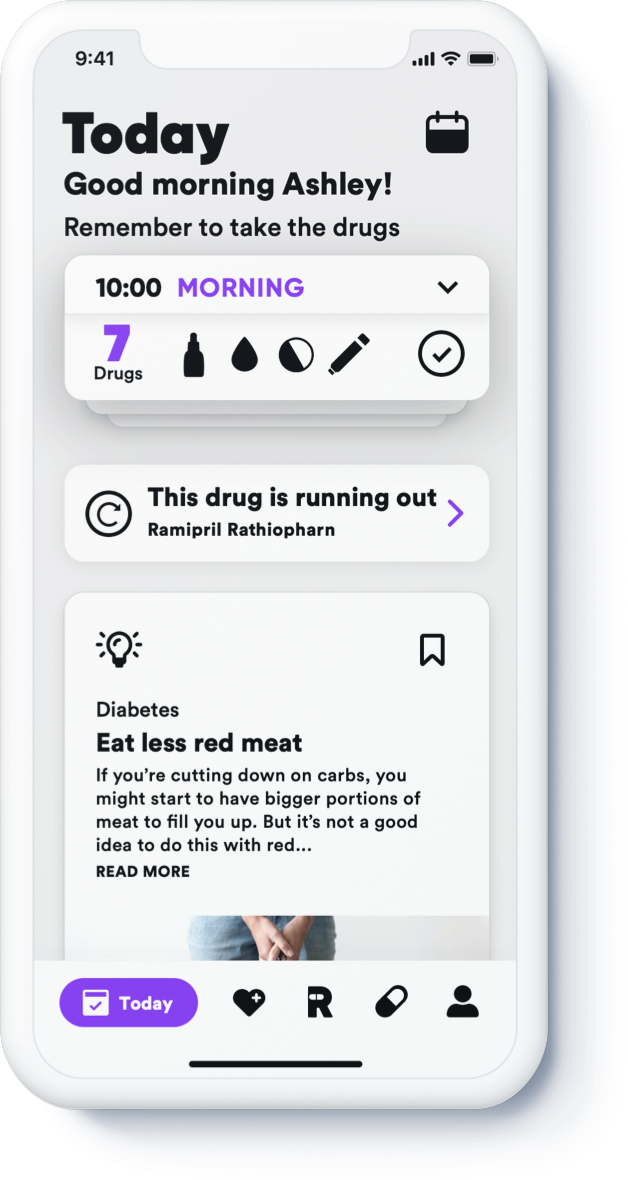

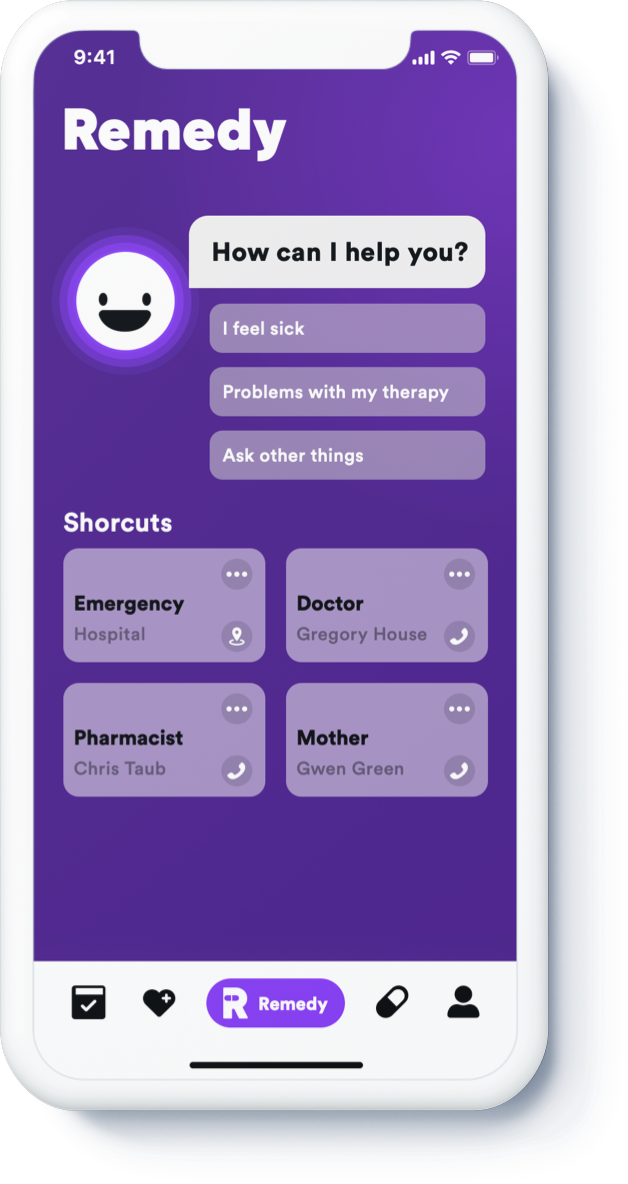

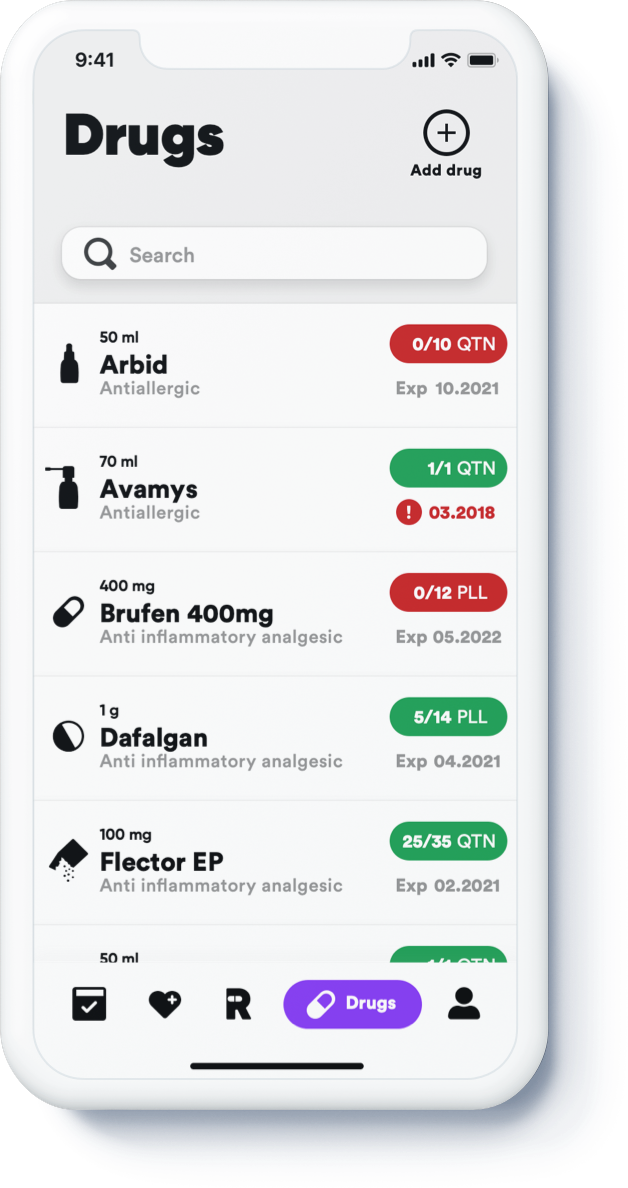
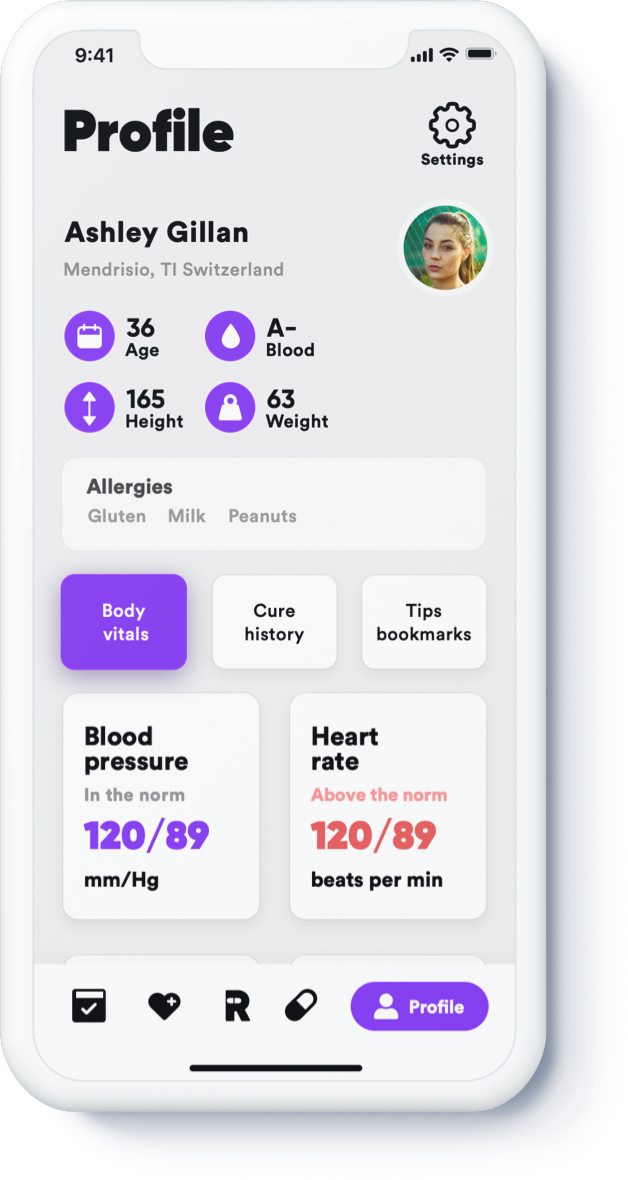
Teaser
Usability test
After several user testing throughout the prototyping process, I gathered opinions that were very fundamental to better design the application, the tests were done by people who mainly had a chronic illness or more than one, in total they are a dozen of people interviewed.
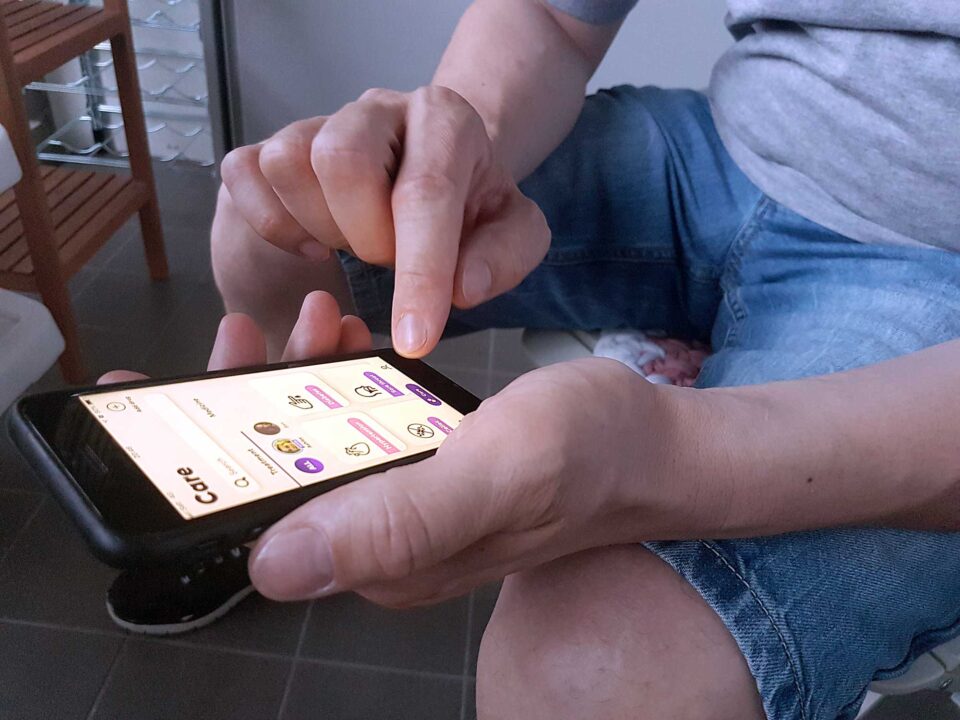
“It would be interesting when you add a medicine that the application warns you that there may be conflicts between two or more medicines and what they are. In fact, it happened that once I got hurt and not going to my doctor, they gave me anti-inflammatory drugs that I could not take along with the medicines I already took”
“It would also be useful to specify whether before, during or after meals.”
“In the profile it would be useful to add the intolerances that you have, so that you have a clearer medical record.”
“Show the history of medications taken.”
“Adding notes to therapy makes the application more personal and rich.”
“In the today section it would be for me, more important than showing therapy, having an overview of what I should take, and then later to know the name of the drug, and maybe also see if it is to be taken before or after meals.”
The day of the presentation
